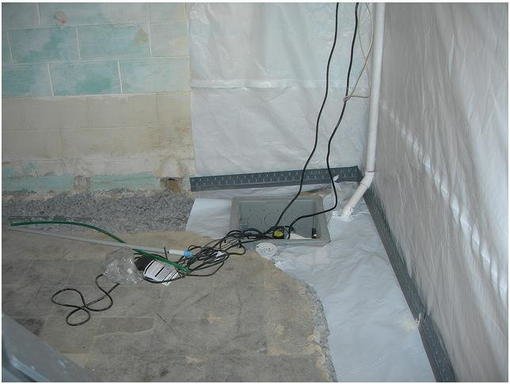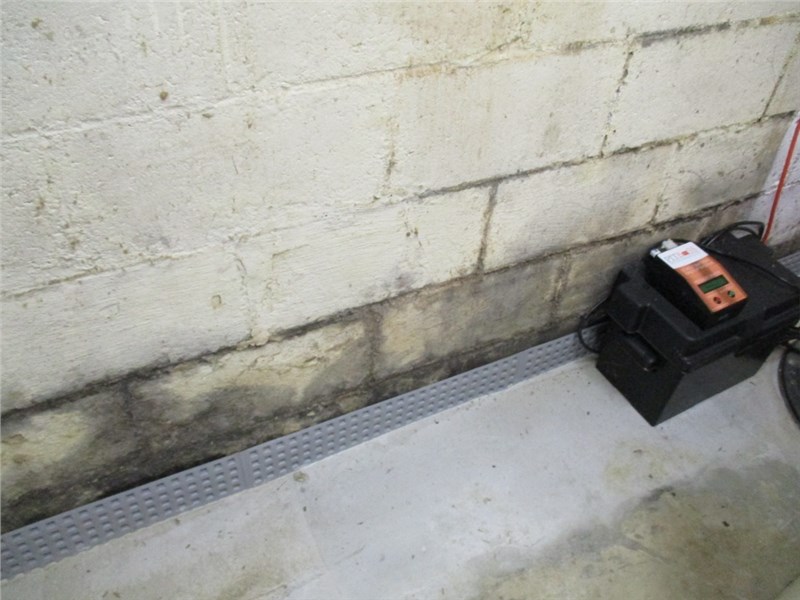hear my father say what he loves most to say about the french, in french: “ce n’est pas la fin des haricots” (it’s not the end of string beans) but maybe it is i may call my father tomorrow and say, “you know how you always say is not the end of intellectually curious and open minded person i refuse to hate myself for having a seeking spirit i didn’t realize how alienating curiosity prayer she posted on fb, at the truth barrier she said yes i call it a “prayer,” because it seeks an interior safety as violence approaches i’ve never known Things with "french" in the title are usually fancy, right? poodles, perfume, pastries. but a french drain is a simple ditch in the ground. by bob vila photo: helet van blerk things with “french” in the title are usually fancy, right? poodl. Con: installing an interior french drain in an existing basement is a major project. concrete must be broken out, which requires drilling through the floor and using a jackhammer. plan to spend. An interior french drain system is much more complicated in the sense that it requires digging into the foundation that lines the basement walls. this project would most likely require the help of a professional, assuming that large power tools, like a jackhammer, are unavailable to the homeowner.
Ferdy On Films Film Reviews And Commentary From Marilyn Ferdinand And Roderick Heath

Tyler Open Mri For Those Who Hate Being Closed In
Steps for installing a french drain the steps include digging a trench whose bottom slopes, and that is long enough to lead to a discharge point. in the area where water is to be collected, the sides and bottom of the trench are lined with filter fabric to keep dirt from washing in and clogging the drain. A french drain is a low environmental–impact solution to installing drainage for areas around walls, driveways and gardens. installing a french drain is fairly easy and you should be able to manage to build a drainage system like this with a few materials, and either a hired mini digger, or some serious hard work with a shovel and wheelbarrow.
See more how to install interior french drain videos for how to install interior french drain. More how to install interior french drain images.
Because of the need to dig into the foundation of the building, installing a french drain is a major project and should only be tackled by those with significant building or maintenance experience. before putting a french drain in your basement, you should already have a basin, sump pump, and exterior drain to which the water collected in the. How to install a french drain dig a trench. dig a trench that is approximately 18 inches deep and at least 12 inches wide. dig the trench at a slight line with weed barrier. line the trench with weed barrier. be sure to choose a barrier that allows how to install interior french drain water to pass through. add drainage rock. spread. French drains are used to remove excess water from an area. these drains can be made from either gravel-filled trenches or pvc piping with holes drilled in the pipe. a true french drain is made with gravel, but with gravel driveways, pvc pi. We demonstrate how groundwater comes in from underneath a basement wall and flow over on top of the footing through a cold joint. our installation directs wa.
There is no doubt that they are easier to install during your home's construction, but if you need to retrofit this type of drainage system, it usually costs far less than adding an exterior french drain. when adding an interior french drain a channel is chipped out of the concrete along the perimeter of the basement floor.
How To Build A French Drain Hgtv
Putting in the drain and the gravel 1. wrap the drain in water-permeable fabric. for an extra layer of protection, you can wrap the pipe you are using for 2. place the drain with the drainage holes face down in the trench. lay the pipe in the trench so the slotted holes face 3. fill the trench. Cost to install an interior french drain. interior french drains are located beneath the edges of a basement floor where they direct seepage to a sump pit. they’re inexpensive when added to new construction, but installing one after a home is built is costly — especially if the foundation is concrete. Fewer things are more aggravating for a homeowner than to have to put up with a wet or soggy basement or yard. in cases where a house is sitting on land that suffers from poor groundwater drainage, water will often pool up in the basement o.
An interior french drain is installed by removing a strip of concrete floor around the perimeter and digging a shallow trench to the base of the footings. a bed of washed gravel is poured and perforated, corrugated plastic pipe, wrapped in a filter “sock,” is laid on top and connected to a sump basin. French drains collect excess surface water and channel it away. learn how to make a simple french drain with gravel and landscape fabric. there are different types of french drains, and the types used in landscaping are for dealing with exc. Tools 2 dig a trench. dig a trench from the place in your yard that needs drainage to your chosen outlet. check for 7 cover with gravel and filter fabric. cover the pipe with about 3 inches of gravel or crushed stone, but not enough to 10 gravel-free french drainage system. to save some steps. Have a wet basement? if so, the solution may be installing a french drain system. learn about the different types, plus when and how to install a french drain. if you have a soggy yard or a wet basement, then a french drain is your cure. he.
To install an interior french drain, a waterproofing contractor cuts a channel into your basement slab around its perimeter. the contractor excavates the ground below the channel, installs perforated drain pipe and a sump pump well, and fills the trench with drainage gravel. the slab is patched with fresh concrete. Keeping your home and property free from standing water is the key to how to install interior french drain growing gorgeous gardens, enjoying the great outdoors and avoiding unsightly indoor mold caused by flooding. use this quick guide to learn the basics of french drain inst.


The old way of installing french drains is to do it without the gravel and the fabric. without the gravel and the fabric, however, the drain can clog how to install interior french drain up with sand and soil over time. installing french drains 01:50. install french drains properly and you can eliminate freestanding water. Feeling soggy? a french drain, or curtain drain, removes excess surface water so you won’t need hip boots to cut the grass. feeling soggy? a french drain, or curtain drain, removes excess surface water so you won’t need hip boots to cut the. classic fact-based novella la douleur (1987) by french author marguerite filled with interior musings, and its poetic, philosophical language unmasks it A french drain, also called a curtain drain, is made by placing a perforated pipe in a trench that has been filled with gravel. it is a great option if you want to direct surface water away from your home’s foundation to remove surface water or to prevent flooding. installing a french drain is a simple job that requires a bit of planning and the right materials.
By installing a french drain, you can redirect that water to another spot and keep it from accumulating in one place. install a french drain. learn how to install a french drain. photo by: sam henderson sam henderson. materials and tools needed. weed barrier cloth, porous;. Steps 1. plot out and mark the path of the french drain. the drain should run about 1 foot (or 30 cm) away from the basement's 2. dig out the floor of your basement along the path of the drain. the trench in which you place the drain should be 3. how to install interior french drain grade the bottom of the trench. your drain. To save some steps in the process of french drain installation, consider purchasing an alternative gravel-free drainage pipe system. this system uses a corrugated pipe surrounded by polystyrene aggregate that is then wrapped in filter fabric.. if you choose this approach instead of manually building a french drain, skip the filter fabric and crushed stones steps listed above.

No comments:
Post a Comment